44 latex list label
LaTeX list - Enumerate and Itemize - LaTeX-Tutorial.com Using lists in LaTeX is pretty straightforward and doesn't require you do add any additional packages. For unordered lists, LaTeX provides the itemize environment and for ordered lists there is the enumerate environment. The elements within both environments have to be declared beginning with the \item command. How to create List(Enumerate and Itemize) in LaTeX? Complete Step-By ... The list environment gives a unique type of label by default unless customized. The \item command is responsible for producing the different labels. Table of Contents Itemize list environment (Start with bullet points) List levels (First to Fourth) Replace default level symbols with other symbols List spacing in LaTeX
Créer et personnaliser des listes sous LaTeX - Xm1 Math Changer les puces (environnement itemize). Cela peut se faire grâce à l'option label de l'environnement itemize. Exemple où la puce standard est remplacée par ...

Latex list label
Lists of tables and figures - Overleaf, Online LaTeX Editor The commands that re-write the titles are: \renewcommand {\listfigurename} {List of plots} will write "List of plots" instead of "List of Figures". \renewcommand {\listtablename} {Tables} will write "Tables" instead of "List of Tables". If you use the babel package in your document and you need to use any of the previous commands, put it inside ... listings - How to label lists? - TeX - LaTeX Stack Exchange I see. As @leandriis said, you have the resume or resume* keys (the latter uses the same settings).. In case there are in between other lists which should not be taken into account for the counter, you have the key series= whatever name you please, then for the other lists of the same series, use the key resume(*)=series_name. - Bernard Customizing LATEX lists - NTG standard LATEX lists, enumerate, itemize, and description, are discussed. Then the general ... label of the first level list elements.
Latex list label. LaTex List Labels | Brandon Rozek LaTex List Labels Published on January 16, 2022 Updated on February 18, 2023 LaTex A quick tip that I recently learned is that the symbols in a LaTex list item is changeable. In fact, the following technique works for both the enumerate and itemize environments. Lists - Overleaf, Online LaTeX Editor 5.2.1 LaTeX list parameters 5.2.2 Creating a custom list using the list environment 5.3 Using the enumitem package to modify and create lists 5.3.1 enumitem package option shortlabels 5.3.2 Modifying a standard list 5.3.3 Creating a new list with enumitem 5.3.3.1 Using \setlist to configure a custom list created with enumitem Changing style of latex description lists - Stack Overflow The formatting of description labels is controlled by the command \descriptionlabel. Here's an example of changing to italics, no bold: \renewcommand{\descriptionlabel}[1]{\hspace{\labelsep}\textit{#1}} To change the formatting of the label to something else, change the \textit{#1}part above. LaTeX/List Structures - Wikibooks, open books for an open world LaTeX will happily allow you to insert a list environment into an existing one (up to a depth of four, more levels are available using packages). Simply begin the appropriate environment at the desired point within the current list. Latex will sort out the layout and any numbering for you.
Tables - Overleaf, Online LaTeX Editor The label will number the table and, when combined with the \ref command, will allow you to reference it. \ref{table:1} This code will be substituted by the number corresponding to the referenced table. ... In the example is 0.5mm but you can use other units—see the article Lengths in LaTeX for a complete list. \setlength{\tabcolsep}{18pt} paralist Extended List Environments newitem/olditem With newitem (set by default), the LATEX environment itemize will be redefined to have an optional argument to specify the format of the label. How to change the format of labels | The TeX FAQ LaTeX in fact has a label-formatting command built into every label definition; by default it's null, but it's available for the user to program. For any label ‹counter› there's a LaTeX internal command \p@‹counter›; for example, a label definition on an inner list item is supposedly done using the command \p@enumii{\theenumii}. LaTeX/Labels and Cross-referencing - Wikibooks It is common practice among LaTeX users to add a few letters to the label to describe what you are referencing. Some packages, such as fancyref, rely on this meta information. Here is an example: Following this convention, the label of a figure will look like \label {fig: my_figure }, etc.
Ordered lists in LATEX using the enumerate environment May 15, 2020 ... \label{ } and \ref{ } commands, respectively. The default numbering styles in the nested four listings under the enumerate environment are:. Referencing Figures - Overleaf, Online LaTeX Editor Besides, it also makes it possible to reference different kind of objects using a common string. it might be convenient to refer to all of them using variants of population. This can be accomplished by using the labels. fig:population for the figure. \begin{ figure } [h!] \includegraphics[scale=1.7]{ birds.jpg } \caption{ The birds } \label ... Latex indent with alphabet list - TeX - Stack Exchange Latex indent with alphabet list Ask Question Asked 4 years, 7 months ago Modified 4 years, 7 months ago Viewed 6k times 1 I want to achieve this simple list via overleaf. 1. xxx 2. xxx 3. xxx (a) First line, (b) xxxxx (c) xxxx 4. xxx And below is my code now, I am new in latex. I stuck here and don't know how to fix the problem. Cross referencing sections, equations and floats - Overleaf Below you can see a simple example of figures cross referenced by their figure caption numbers: \section{ Introduction } \label{ introduction } This is an introductory paragraph with some dummy text. This section will be referenced later. \begin{ figure } [h] \centering \includegraphics[width=0.3\linewidth]{ overleaf-logo } \caption{ This image ...
Introduction to list structures in LaTeX The default label for unordered lists is a bullet. (•). I will show later (section 6) how to replace the label with another symbol. 3 Numbered/ordered list. The ...
Latex : Customisation de listes à puces Apr 11, 2015 ... Comment améliorer l'apparence des listes à puces LaTeX, afin de faciliter ... \begin {itemize}[label= \textbullet , font= \LARGE ].
Customizing LATEX lists - NTG standard LATEX lists, enumerate, itemize, and description, are discussed. Then the general ... label of the first level list elements.
listings - How to label lists? - TeX - LaTeX Stack Exchange I see. As @leandriis said, you have the resume or resume* keys (the latter uses the same settings).. In case there are in between other lists which should not be taken into account for the counter, you have the key series= whatever name you please, then for the other lists of the same series, use the key resume(*)=series_name. - Bernard
Lists of tables and figures - Overleaf, Online LaTeX Editor The commands that re-write the titles are: \renewcommand {\listfigurename} {List of plots} will write "List of plots" instead of "List of Figures". \renewcommand {\listtablename} {Tables} will write "Tables" instead of "List of Tables". If you use the babel package in your document and you need to use any of the previous commands, put it inside ...



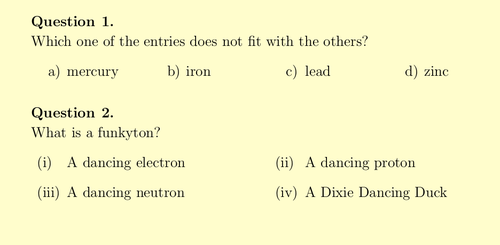
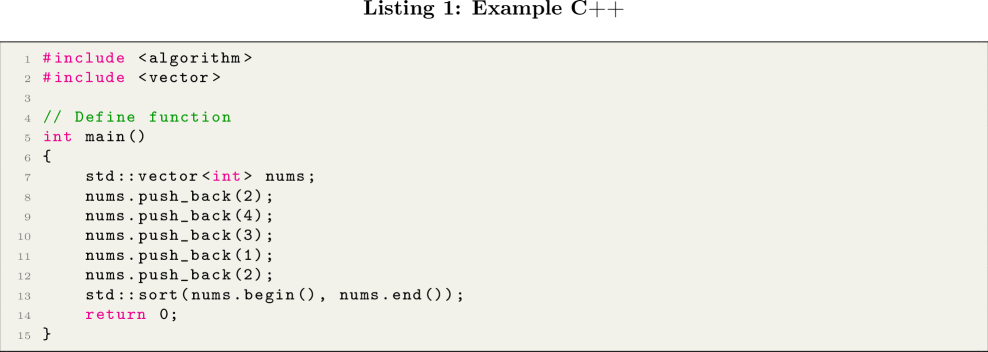



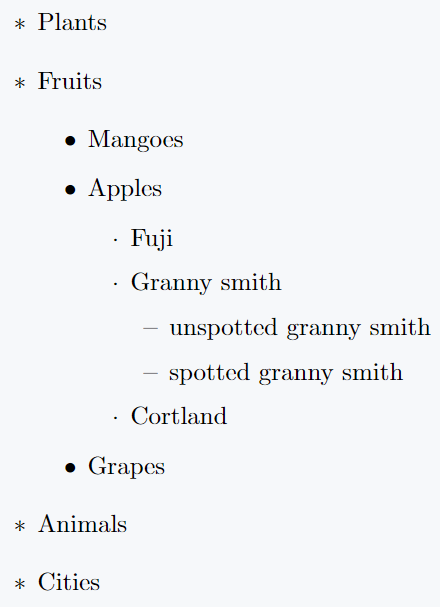



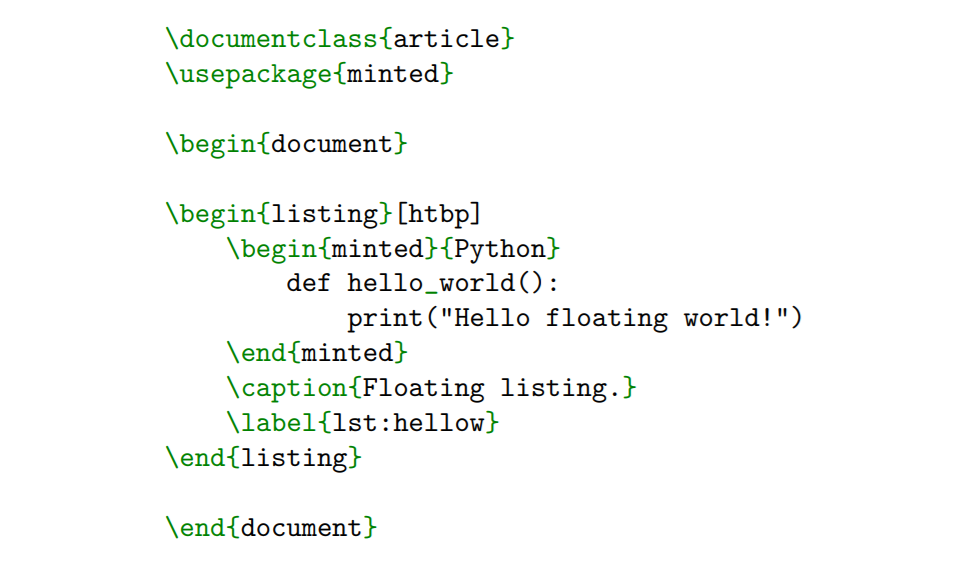




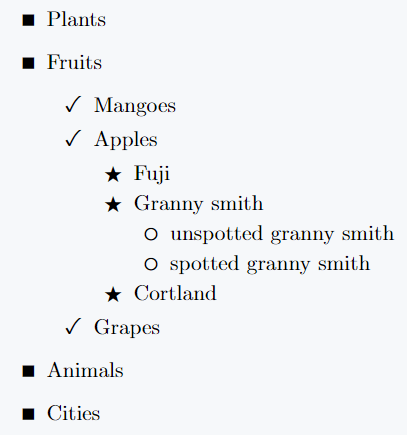


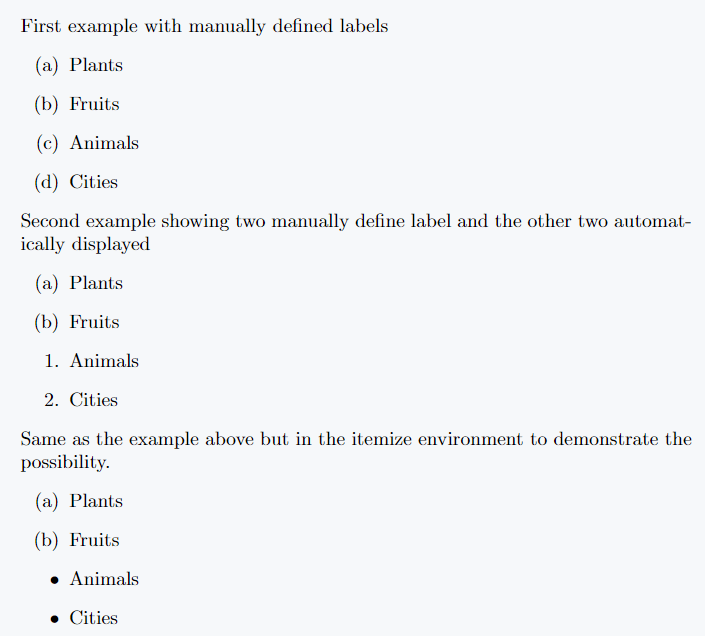




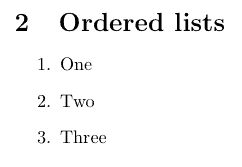






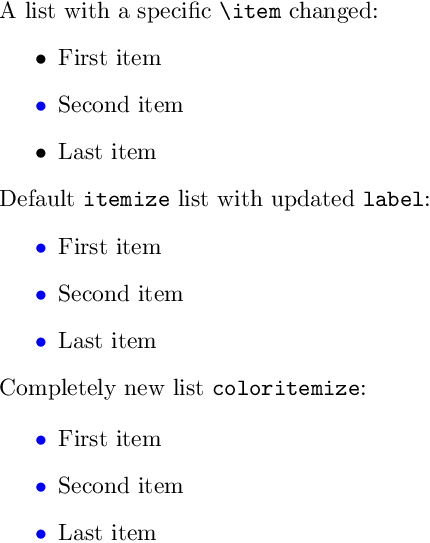



Komentar
Posting Komentar